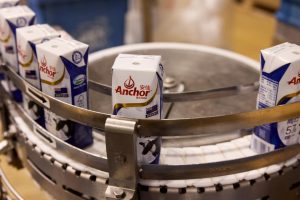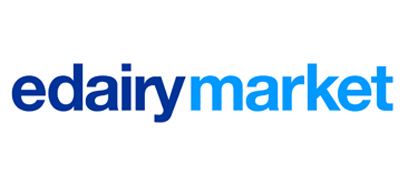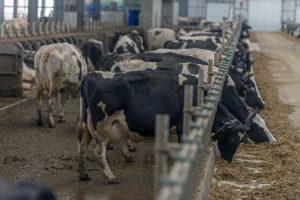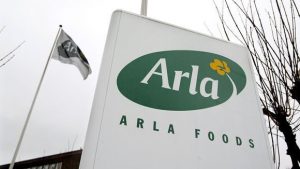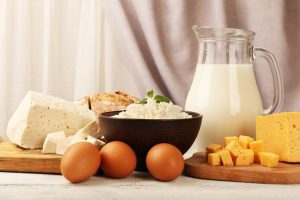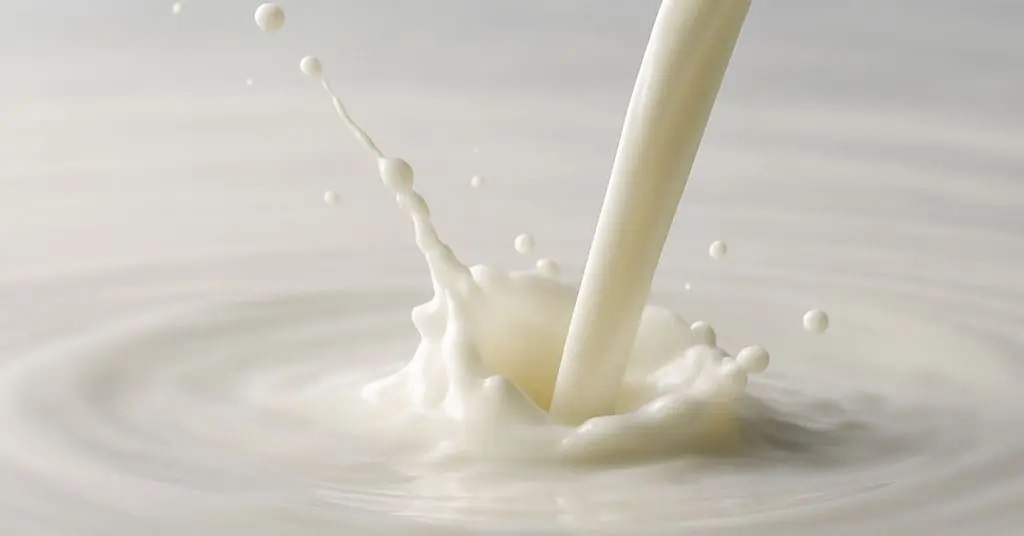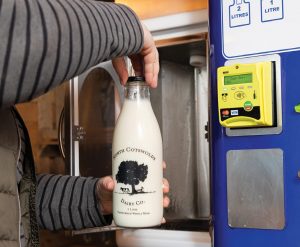
After three active trading days, it’s time for our final market update before we step away for our annual summer break.
Four weeks without dairy market chatter—something we both crave and fear in equal measure. We genuinely enjoy what we do, and few things bring us more satisfaction than diving deep into dairy fundamentals and helping our partners close meaningful deals.
We’ll be back on August 18th, refreshed and ready to inform, advise, and connect. Until then, this is our final long read. A special thanks to the Vesper team, who generously allowed us to use some of their data to frame our market view.
Bullish optimists, feel free to skip today’s newsletter.
The rest of you—read on.
Liquids: H1 Milk Expansion, More Growth Ahead in H2
Let’s start where it all begins: liquids. Milk production in the early months of 2025 has outpaced 2024. EU-28 data through May shows production up approximately 1.2% year-on-year. April and May stood out in particular as strong months. Regional differences are notable:
- Germany remains behind 2024 levels by just over 1.2%,
- France has now overtaken last year YTD,
- Ireland leads the charge with +7.6% YTD,
- The UK follows at nearly +4%.
Overall, the EU is producing more milk, driven by solid farmgate prices and historically strong margins. And that’s no surprise—producers are paying, and farmers are earning.
Looking ahead, most of our partners forecast further growth through H2. Margins remain solid, and despite being well into the summer, there’s been no sign yet of a bluetongue outbreak—unlike this time last year. We expect Germany to recover from its sluggish H1, especially compared to this year’s numbers with last year’s bluetongue-affected numbers, and see broad incentives across the bloc for continued production. Even if commodity prices were to correct lower, we’d expect any slowdown in growth only to materialise somewhere next year.
Strong milk output is also showing in today’s liquid spot markets:
- Raw milk struggles to hold above €0.50/l,
- SMC has corrected down toward €2,100/ton,
- Cream prices have taken a sharp hit:
- Benelux: €7,800–€7,900
- Germany: €7,700–€7,850
- Eastern Europe: €7,600–€7,700
- France: still above €8,000, but at €8,200+ we see limited buying interest.
Our outlook for liquids during our time off is bearish. Spot demand is expected to slow considerably. Butter buying is close to non-existent for the next 4–8 weeks, cheese demand remains soft, and the fresh sector alone can’t absorb the surplus. Cool, wet conditions in Northwest Europe are good for production, but less so for consumption.
While it’s never easy to call the spot market from a distance, we wouldn’t be surprised to see liquids trade ~10% lower than current levels by mid-August.
Butter: Rapid Stock Build-Up Signals Trouble
The butter market has held up longer than we expected—but cracks are now clearly forming in the fat complex. We’re seeing unmistakable signs of a rapid stock build-up. Yes, we’re known for our bearish tone—but for the record, we were also among the first to call last year’s butter shortage and the run towards €8,000+. We’re not blind to bullish signals—we just don’t see any in this market right now. Let us walk you through why.
Imports vs. Exports: +20,000 mt in Four Months
One of the first warning signs: exports are trailing last year. While EU butter exports remain decent, the gap versus 2024 is widening. Based on current data, export volumes are roughly in line with 2022, but already 6,000 mt below 2024 levels.

Those who take a closer look will notice that Irish butter exports are still up 25% compared to 2024. However, we expect that advantage to erode in the second half of the year, which would only deepen the projected year-end butter surplus within the EU. Last year’s surge in Irish exports to the US was unprecedented—largely attributed to pre-emptive buying ahead of potential Trump-era tariffs. If those Irish exports to the US normalise—or are excluded from the equation entirely—the EU stands to lose a significant chunk of export volume between now and December.

In 2022, the EU was trading butter at a significant premium versus New Zealand and the US, resulting in a sharp drop in export competitiveness. If we follow the same export trendline as 2022—and we consider that the optimistic scenario—we’re looking at an additional 35,000 to 40,000 mt of butter remaining in the EU by year-end, purely due to reduced export activity.
But it’s not just a case of exporting less. The EU has also started importing more. In the first four months of 2025, the EU imported nearly 9,000 mt of butter—a jump of 8,000 mt compared to the same period last year. Based on both trade data and recent conversations with our partners, we believe this trend has legs. If you look back at late 2022 and early 2023—the last time the EU traded at a structural premium to the US and NZ—you’ll see that imports topped 25,000 mt in a single year. And that was with fewer manufacturers open to non-EU origins.
This time, more EU buyers are approving third-country butter in their recipes, and we believe 25,000 mt is now a modest forecast. A considerable volume is already on the water—and even if prices soften in the coming weeks, these imports are locked in and will still hit the EU market.

Add those 25,000 mt of projected imports to the 35,000–40,000 mt of butter staying in the EU due to lower exports, and the result is clear:
The butter deficit versus last year could shrink by as much as 65,000 mt. That’s a substantial shift in fundamentals. A year ago, the narrative was tight stocks and export strength. This year, it’s shaping up to be the opposite: declining exports, rising imports, and a ballooning domestic surplus. All of that, in a market where demand is already soft and spot interest is fading.
Also More AMF in the EU: Less Out, More In
And while we believe the butter figures alone are already enough to justify downward pressure on prices, they don’t even include AMF volumes yet. Looking at the Vesper platform, EU AMF exports for the first four months of 2025 are down by just over 1,000 mt compared to last year. Meanwhile, imports are sharply up, with nearly 7,000 mt of AMF entering the EU—the majority coming from New Zealand. That’s a net increase of almost 4,000 mt in just four months.
And more is on the way. Based on May export figures from NZ—another 6,000 mt of AMF is en route to the EU. These volumes aren’t yet visible in official EU import data, but they’re very real. Looking back at 2022, when the EU traded at a fat premium and NZ was actively shipping into Europe, we saw similar patterns. If we project that trend forward for the rest of 2025, the combined impact of increased AMF imports and reduced EU exports could add another 20,000 to 25,000 mt of fat to the European balance sheet by year-end.

And More Production, Too
As if rising imports and shrinking exports weren’t enough, the EU is also producing more butter itself. In the first four months of 2025, EU butter production is up by approximately 10,000 mt compared to the same period last year. Once again, regional differences are striking:
- Germany is producing more butter, despite lower milk collections—a clear signal of prioritisation in processing.
- Meanwhile, The Netherlands is significantly down in output, perhaps due to policy shifts or changing processor strategies.

While the earlier figures covered January through April, latest May data—not yet reflected in the previous graph—confirms that EU butter production is accelerating. Major producers are clearly ramping up:
- Ireland: +6.6%
- France: +6.5%
- Poland: +9.2%
These aren’t marginal players—these are core butter-producing countries, and they’re all adding volume to an already expanding EU production line. So far, 2025 butter production is tracking slightly ahead of 2022. And in 2022, the second half of the year saw significantly stronger milk intakes. Based on current production conditions and margin incentives, a similar H2 ramp-up in 2025 seems very plausible. If butter production in 2025 ends up matching 2022 levels, the EU would produce almost 50,000 mt more butter than in 2024.

So Why Are We So Bearish on Butter?
Because the numbers simply don’t support any other view. If we replay the 2022 stock build-up scenario, we could easily see EU year-end butter stocks grow by ~130,000 mt:
- +50,000 mt from increased production
- +50,000 mt from reduced exports
- +25,000–30,000 mt from additional butter and AMF imports
Frankly, that estimate may not even be overly pessimistic (or optmistic from where you view it). And hoping the world market will step in to absorb EU surplus? That’s wishful thinking at best. Let’s look at the global fat landscape:
- New Zealand: butter production +11% YTD
- United States: +3.5%
- Argentina: +17%
- Turkey: +10% YTD — and usually an importer of EU butter
There’s no global shortage of fat. Quite the opposite.
Demand: Still the Big Unknown
On the supply side, the situation is crystal clear: Production is up, Imports are up and Exports are down. That leaves internal EU demand as the last wildcard. And unfortunately, this is where hard data is missing. What we do hear isn’t encouraging:
- Chocolate sector demand remains sluggish
- Retail volumes have declined in recent months
- French bakeries are postponing orders
- Other food manufacturers are pushing back deliveries
Even if we assume internal EU demand is stable, the balance sheet remains decidedly bearish.
Where Will Prices Go?
It’s impossible to slap a precise price tag on butter for Q4. Short-term sentiment—heatwaves, bluetongue spikes, surprise export flows—can distort the picture quickly. But if nothing major changes, we believe there is real risk of butter trading below €6,000/mt by year-end. We’ve seen no industry support these past days or weeks, and current demand seems largely covered. Buyers may continue to lock in volume for 2025, which could soften the fall—but that’s cushioning, not reversal.
Cheese: Dragged Down by Butter?
When it comes to cheese, the picture is less clearly bearish—though calling it bullish would be a stretch. According to Vesper data, EU cheese production is up nearly 1% year-on-year, which translates to approximately +30,000 mt of additional volume. At first glance, that increase seems modest—but context matters. Unlike butter, where we’re comparing strong 2025 data against a weak 2024 baseline, the comparison for cheese is against a historically strong 2024. That makes the continued YoY growth in cheese production more meaningful. The sector isn’t just holding its ground—it’s quietly expanding from an already elevated base.
In other words: the volumes being produced are substantial, and cheese—while less volatile than butter—isn’t disconnected from the broader fat complex. If butter keeps sliding, it’s only a matter of time before it pulls cheese sentiment down with it, even if fundamentals appear more stable for now.

While cheese imports remain relatively insignificant when compared to total EU production, they’re not standing still. In 2024, imports into the EU grew by approximately 20,000 mt—and 2025 is already on track to set a new record. As of April, import volumes are up roughly 30% year-on-year, suggesting we could see an additional 30,000 mt of cheese coming into the bloc this year. Again, in percentage terms, this is still a small slice of the overall EU cheese market—but it’s yet another sign of growing competition on the margin, especially for commodity-type cheeses where price pressure is already a factor.

So far, the supply side for cheese mirrors butter in key ways: Production is up and Imports are rising But what about demand? Looking at the data, EU cheese exports are down slightly—-1.2% YoY. On the surface, that seems negligible. However, a closer look reveals a more worrying trend: Up until March, EU cheese exports had been growing year after year. Then came April, which showed a sharp 12% drop in export volume compared to April 2024. This sudden reversal is notable. Whether it marks a structural shift or a short-term dip remains to be seen—but in a market already heavy on supply, even small changes on the demand side can shift sentiment quickly.

The US: From Growth Driver to Drag
A deeper dive into the data points to the US as the primary driver behind the recent export decline. And the likely culprit? Renewed import duties on EU dairy. The contrast between butter and cheese exports to the US tells the story: During the recent tariff pause, EU butter exports to the US surged—unsurprisingly. Butter is easily stored frozen, which allows sellers to front-run tariffs by shipping large volumes in advance. In fact, it looks like EU exporters made the most of that window to stock US buyers aggressively.
But cheese doesn’t work that way. Most EU cheese exports are fresh or semi-fresh, and cannot be stockpiled in the same manner. As a result, with duties now looming (or in place), we’re seeing a clear drop-off in shipments, particularly from April onward. It’s a smart move on butter—but on cheese, the tariff environment is already creating visible friction.

Zooming out, the cheese market shows similar—but—less extreme—dynamics compared to butter:
- Production is up
- Imports are increasing
- Exports are declining
- Internal demand remains uncertain
We still lack reliable data on EU internal consumption, but even assuming it’s stable, the supply-demand balance leans bearish. What softens our outlook slightly is that cheese doesn’t collapse under pressure the same way butter does. That said, recent price patterns show a strong correlation: every time butter drops sharply, cheese tends to follow. Not as violently—but it does follow.
Price Outlook: Resistance, Not Immunity
Forecasting specific price points is a gamble, but with butter potentially slipping toward €6,000, we find it hard to argue for cheese holding well above €4,000. That said, mozzarella around €3,700 and Gouda slightly higher still feel realistic. Cheese appears to have a stronger resistance level, possibly due to more stable retail and foodservice flows or the absence of speculative positioning.
But make no mistake: if fat continues to break down, cheese won’t be immune—just slower to respond.
Powders: Why We’re (Cautiously) More Bullish Here
We’ve been asked this one quite a lot lately:
“Why are you still bullish on powders?”
For Linda, it’s a particularly tough question—she’s still struggling to find the bullishness herself. And truth be told, we agree with many who argue powders should stay within their historical price range. But based on the data we’re seeing on SMP production, and the age of product moving through our books, we feel there’s reason to introduce a slightly different voice into the market narrative.
Production Trends: Still Tight
Let’s start with the basics: EU SMP production is down 2.3% YoY. Yes, that gap is closing—back in February, production was down over 6% compared to the previous year. But the more important indicator is the five-year trendline, and that one is clearly pointing down.
To put it into context:
- In 2024, the EU produced roughly 100,000 mt less SMP than in 2022.
- The trend isn’t just a dip—it’s a structural slowdown.
- While milk volumes are expected to grow in 2025, we find it unlikely that SMP production will return to 2022 levels anytime soon.
- Catching up to 2023 is probably the best-case scenario.
So while we may not be in a bullish price rally, we’re looking at tighter fundamentals than we see in butter and cheese, and that starts to matter, especially when older stocks are circulating, and fresh production isn’t keeping pace.

Some might argue that SMP imports into the EU are too minor to matter—but for the sake of consistency (and fairness to all product groups), let’s take a look anyway. In 2024, the EU imported around 20,000 mt of SMP. This year, those volumes appear to be on an upward trend. Based on the current pace—roughly +30% year-on-year—the EU could be on track to import 25,000 mt more SMP in 2025. Add that to the ~20,000 mt of additional production we may see by year-end (if volumes catch up to 2023 levels), and the supply side starts to feel a bit heavier than the “tight” narrative would suggest.
So, while production for now is structurally lower than in previous years, and stocks may not be growing fast, rising imports and catch-up production could still tip the balance.

Exports: A Glimmer of Optimism
Looking at the export side of the SMP market, there’s finally a hint of positivity—and that’s exactly what we’ve been searching for. Exports are currently tracking +4.5% above last year’s pace. If that growth holds, the EU could return to 2023 export volumes, which would mean an increase of around 70,000 mt by year-end. The EU does need a bit of positivity. A stronger dollar or blocked supply chains from the US to SE Asia due to exports tensions… the market needs a push, we admit.
Now let’s put that in context.
On the supply side, we’re potentially looking at:
- +20,000 mt of added production
- +25,000 mt from higher imports
→ That’s a ~45,000 mt increase in total supply.
So if exports rise by ~70,000 mt, it could more than offset the supply bump, tightening the balance and giving the market some upward traction—even if only modest. It’s not a breakout rally scenario, but it is a fundamentally healthier story than what we’re seeing in fats.

Forecasting a €500 price increase over the coming months we know is to optimistic—and let’s be honest, it would certainly help soften the blow from the expected butter free fall. But with the US and New Zealand still pricing competitively against EU SMP, we see limited room for sharp upward movement in the short term.
That said, powder might just be the quiet surprise the EU dairy market needs right now. If export demand holds, production stays behind and in a YoY defecit, and stock quality tightens, we believe SMP could slowly gain ground. By year-end, prices creeping back up toward €2,400–2,500/mt or even 2,600/mt seems realistic—and the data gives room for that view.
It’s not a rally. But it’s something solid to hold on to—and it may just be enough to help keep farmgate milk prices afloat and EU farmers engaged heading into 2026.
Final Thought: A Market Leaning Heavy
As we step away for a few weeks, the picture we leave behind is one of weight, not momentum.
Fats are over-supplied, sentiment is soft, and demand—both internal and export—is underwhelming. Butter fundamentals are not just bearish; they’re becoming structurally heavy. Cheese feels sturdier, but only just. And while powders aren’t surging, they may quietly become the stabiliser in an otherwise unstable complex.
Markets rarely fall in straight lines. Nor do they climb on logic alone. But with current fundamentals laid bare, downside risk outweighs upside hope—at least for now.
If we return in mid-August and prices have dropped, we won’t be surprised.
If the market found a way to hold firm through it all?
Well, that’s dairy for you.
You can now read the most important #news on #eDairyNews #Whatsapp channels!!!
🇺🇸 eDairy News INGLÊS: https://whatsapp.com/channel/0029VaKsjzGDTkJyIN6hcP1K





